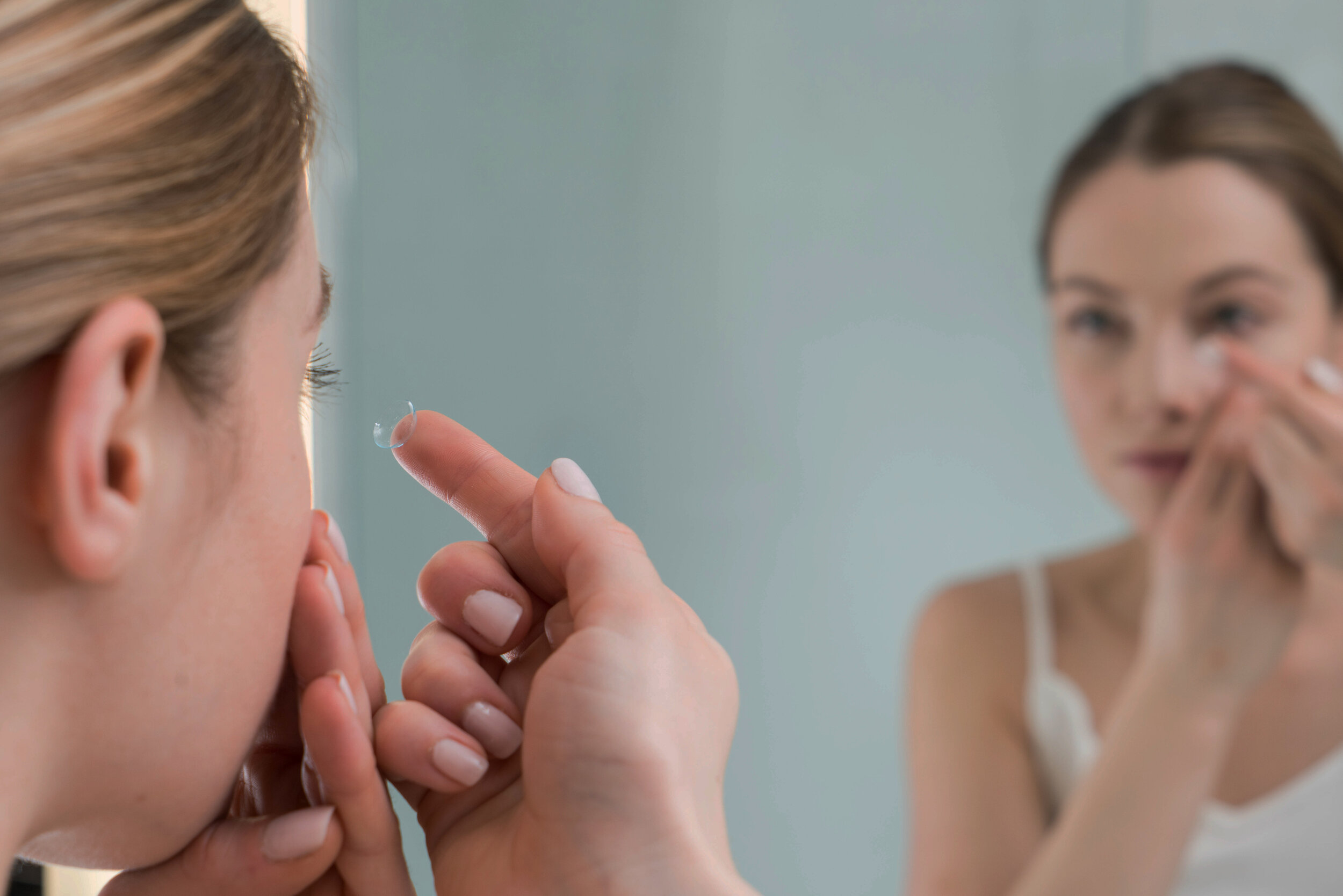
Soft Contact Lenses
Single Use Soft Contacts
Daily Disposables are strongly encouraged at this time as the healthiest option for contact lens wear! Single use soft contact lenses are individually packaged for one-day use. You put in a new pair in the morning, then remove and discard them before you go to sleep at night.
Pros
Single use soft contact lenses are convenient. They don't need to be cleaned and can be used intermittently. They provide the healthiest way to enjoy contact lens wear.
Cons
Single use soft contact lenses may cost more for an annual supply; however you do not need to purchase storage/ disinfecting solution.
Daily Wear Soft Contacts
Daily wear soft contact lenses are designed to be worn daily and may be reused for a certain number of weeks, depending on the manufacturer. Typically, you insert these lenses every morning and remove them every night.
Cons
Daily wear soft contact lenses must be cleaned every day and replaced regularly to avoid complications such as corneal infections.
Pros
Daily wear soft contact lenses may be more economical than single use contact lenses.
Extended Wear Soft Contact
Extended wear soft contact lenses are designed to be worn continuously — both day and night — for a certain number of weeks, depending on the manufacturer.
Cons
Continuous use promotes the buildup of micro-organisms on the lenses and increases the risk of infection and other complications.
Pros
Extended wear contact lenses allow a certain amount of oxygen to reach your cornea even while you're sleeping, so the lenses can be worn overnight — although your eye specialist may recommend only occasional overnight use.
Rigid Gas Permeable (aka "Hard") Contact Lenses
Cons
RGP contact lenses are initially less comfortable than are soft contact lenses. You may take a week or more to adjust to the feeling of lenses in your eyes. RGP lenses can get debris underneath more easily than soft lenses and so are not recommended for dusty, windy environments.
Pros
RGP contacts provide greater oxygen permeability than do some soft contact lenses, which can reduce the risk of infection. They may also provide sharper vision than soft lenses in some prescriptions. In some cases wearing them may help slow down the increase in prescription.
